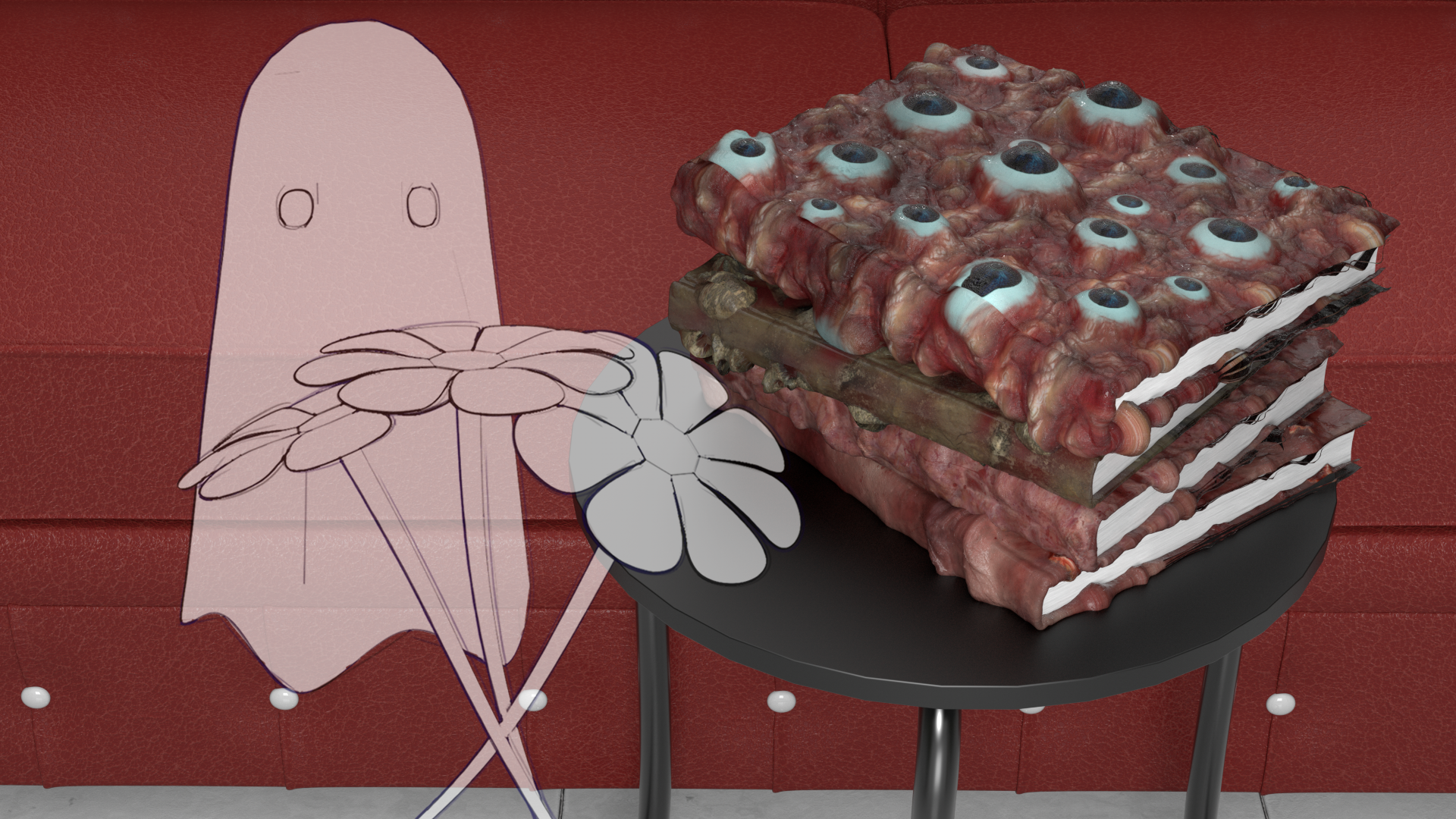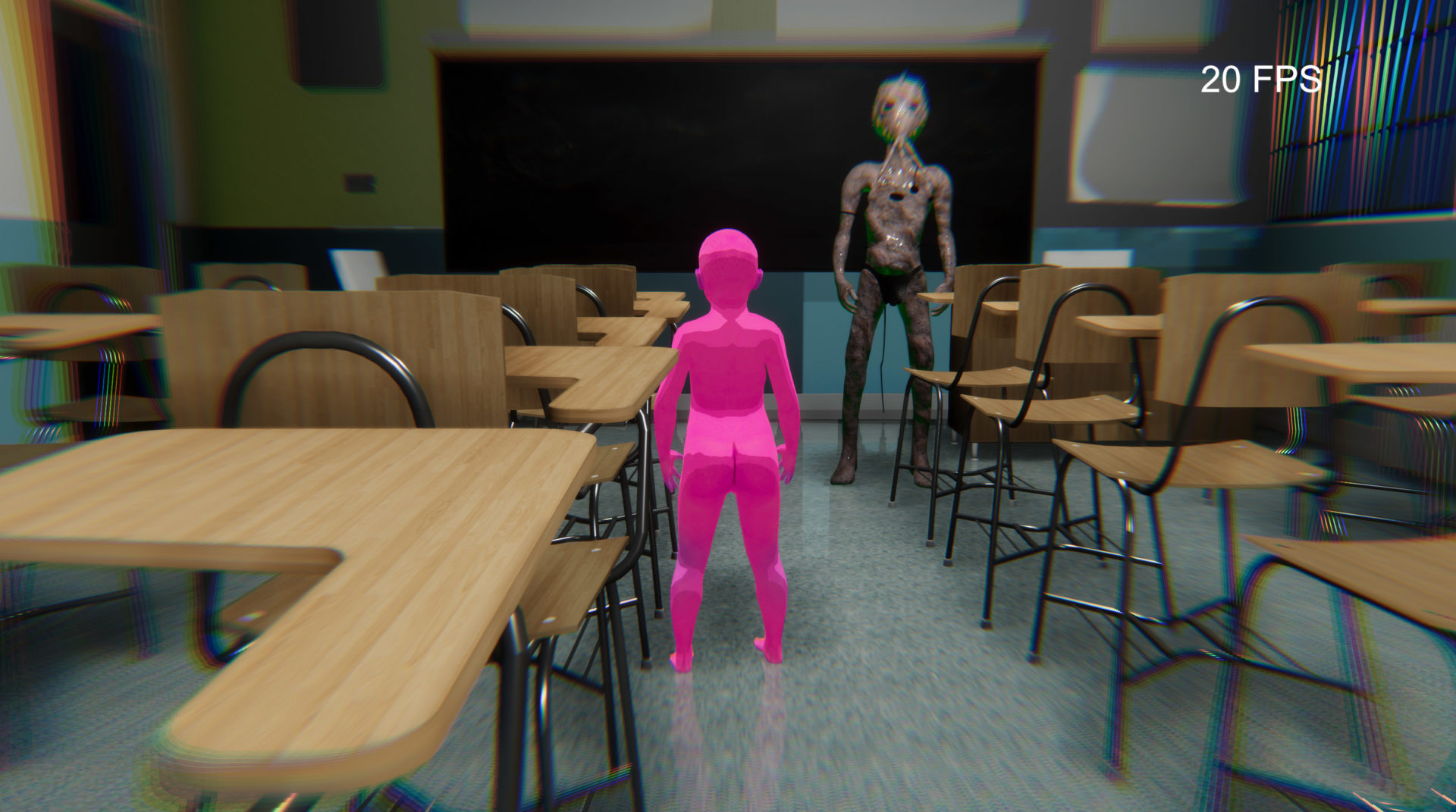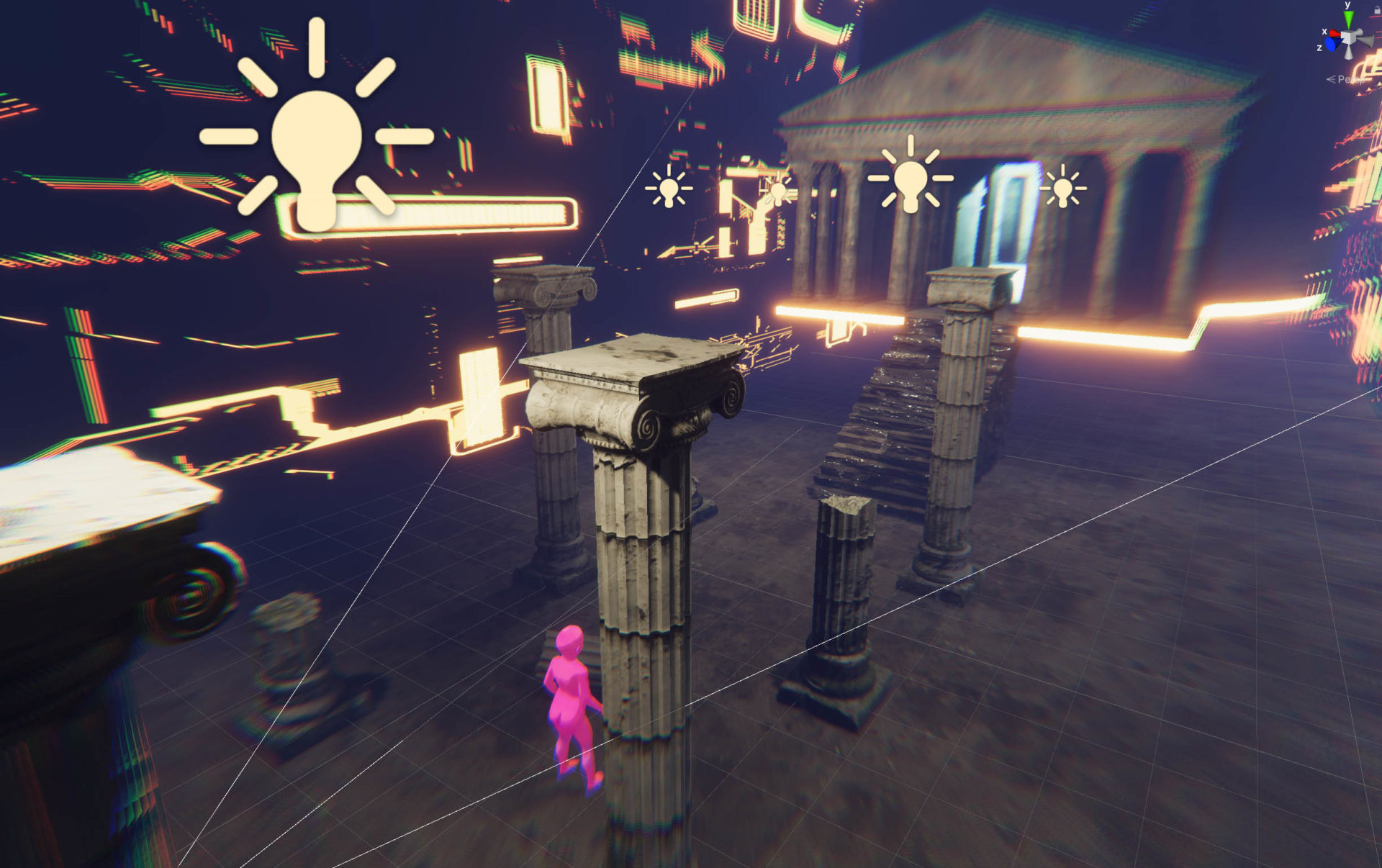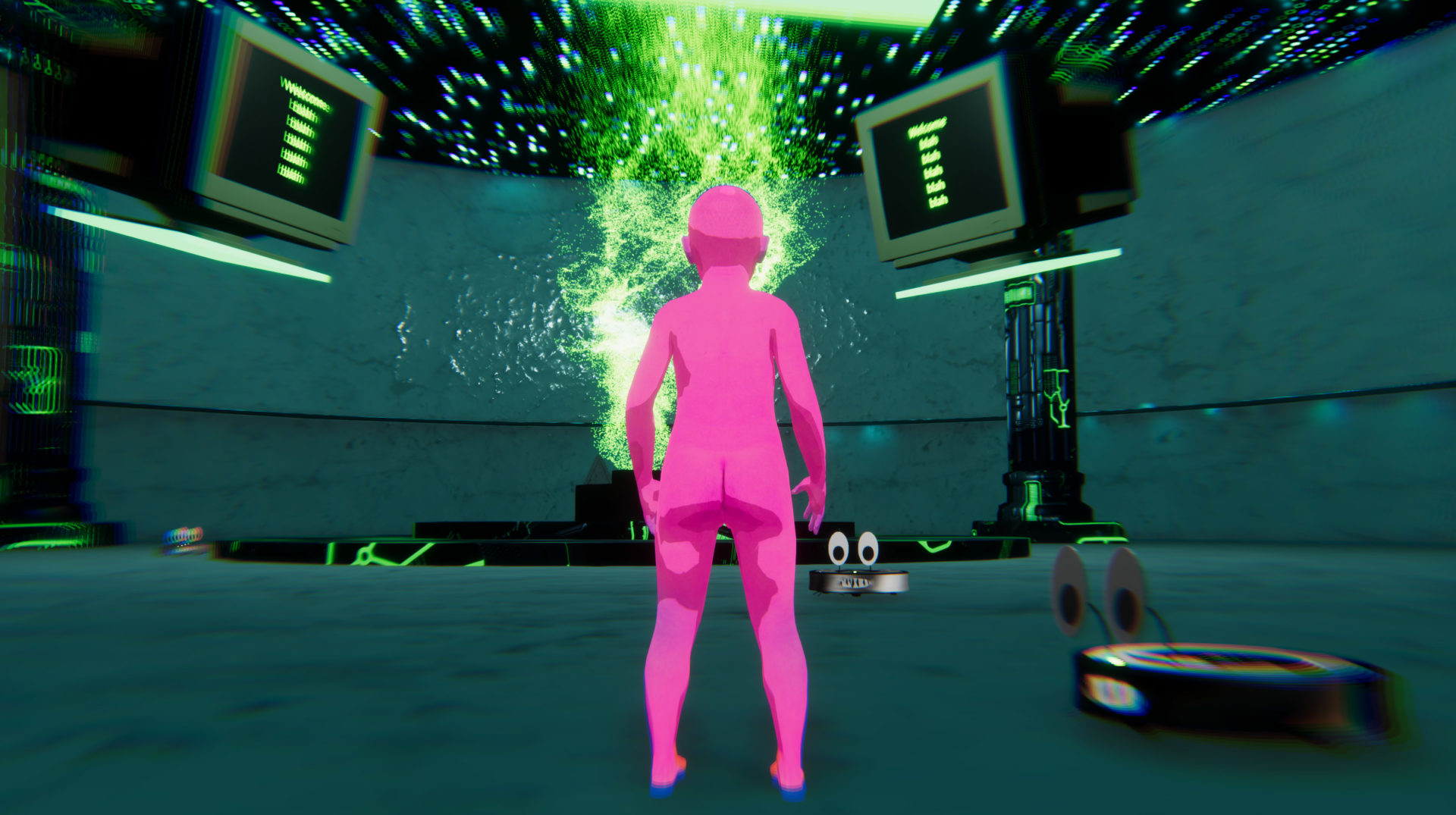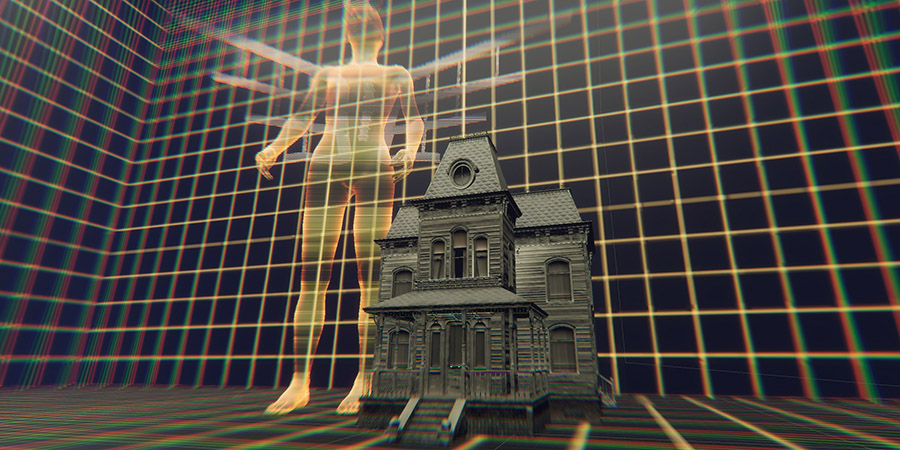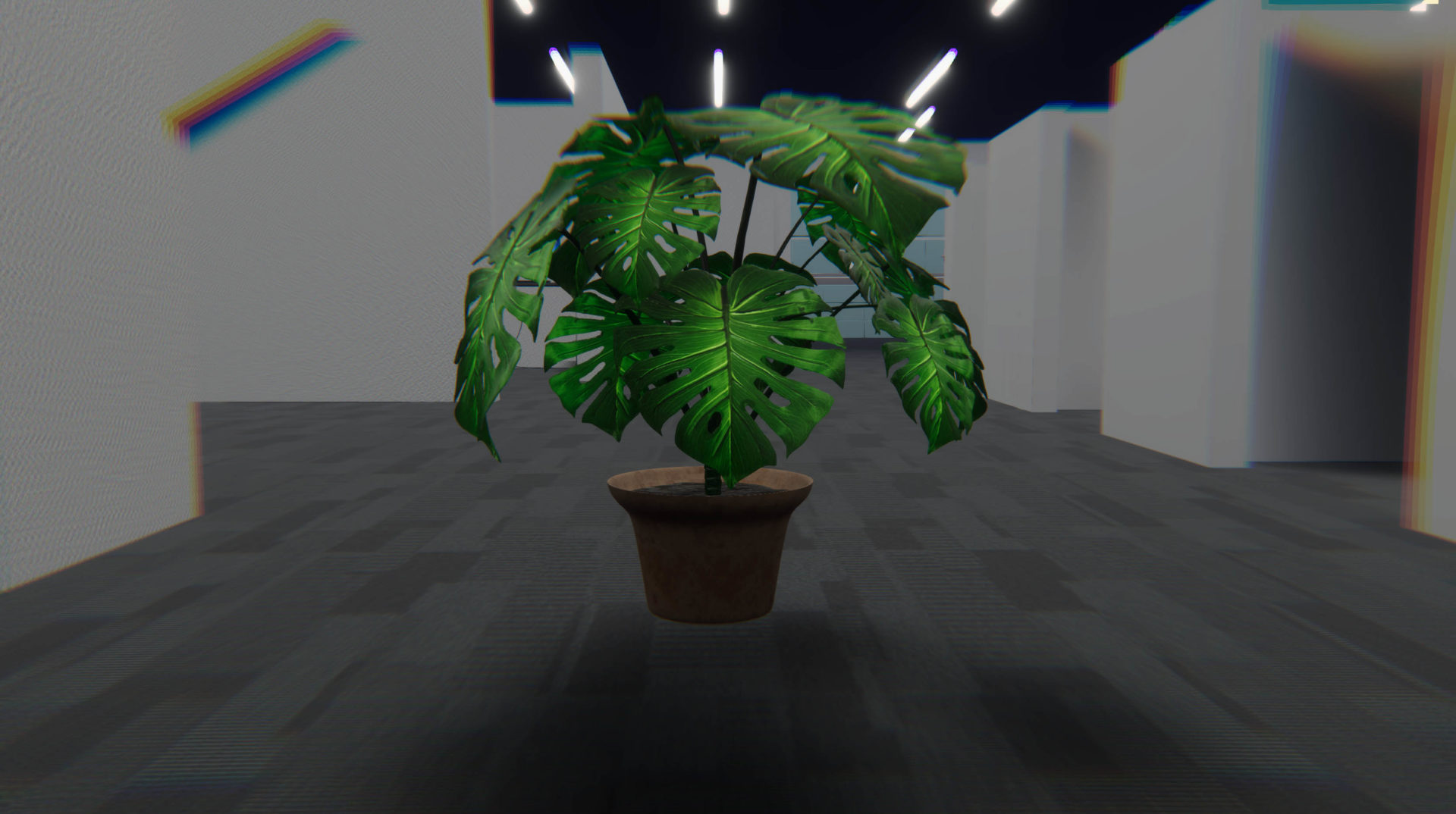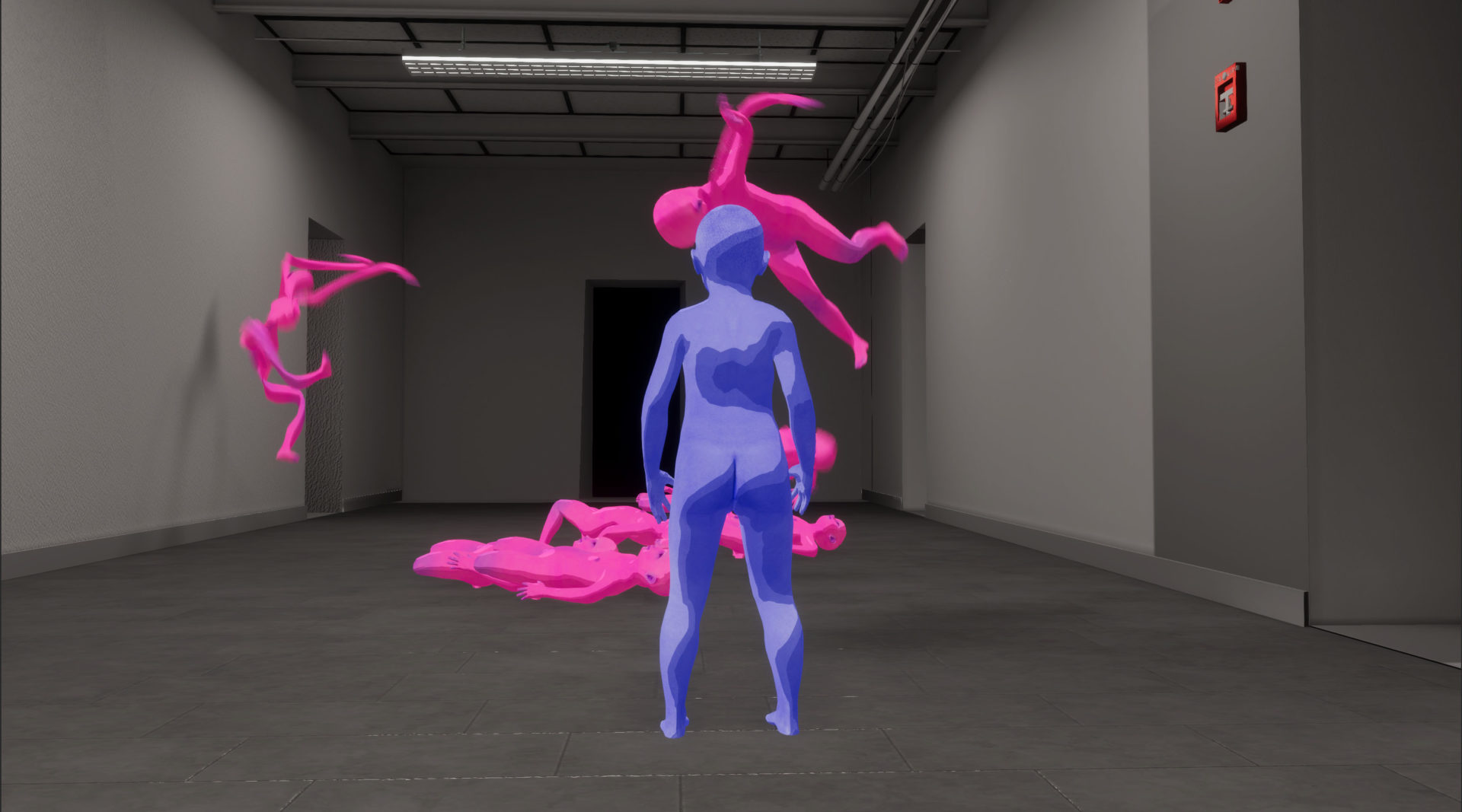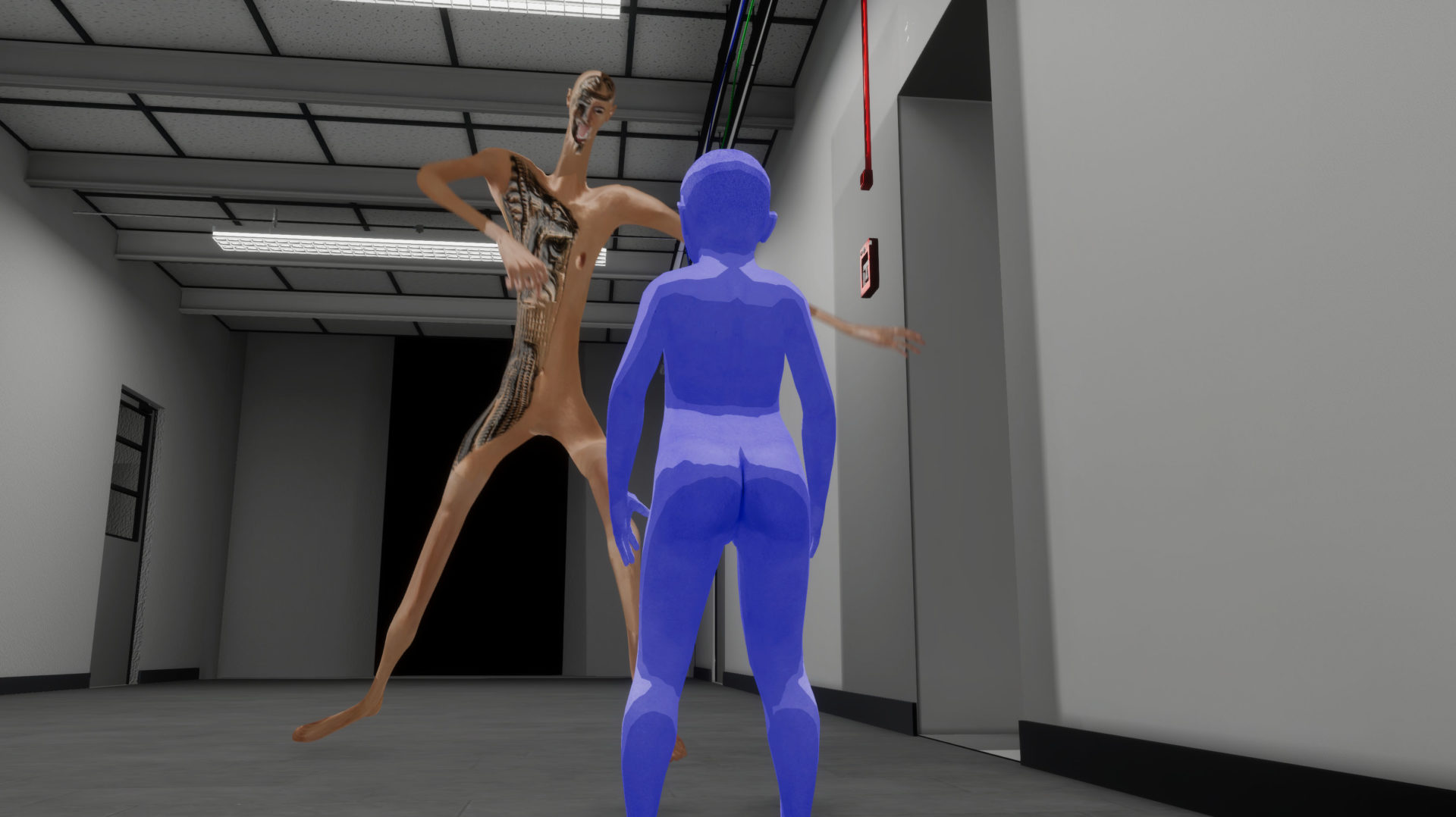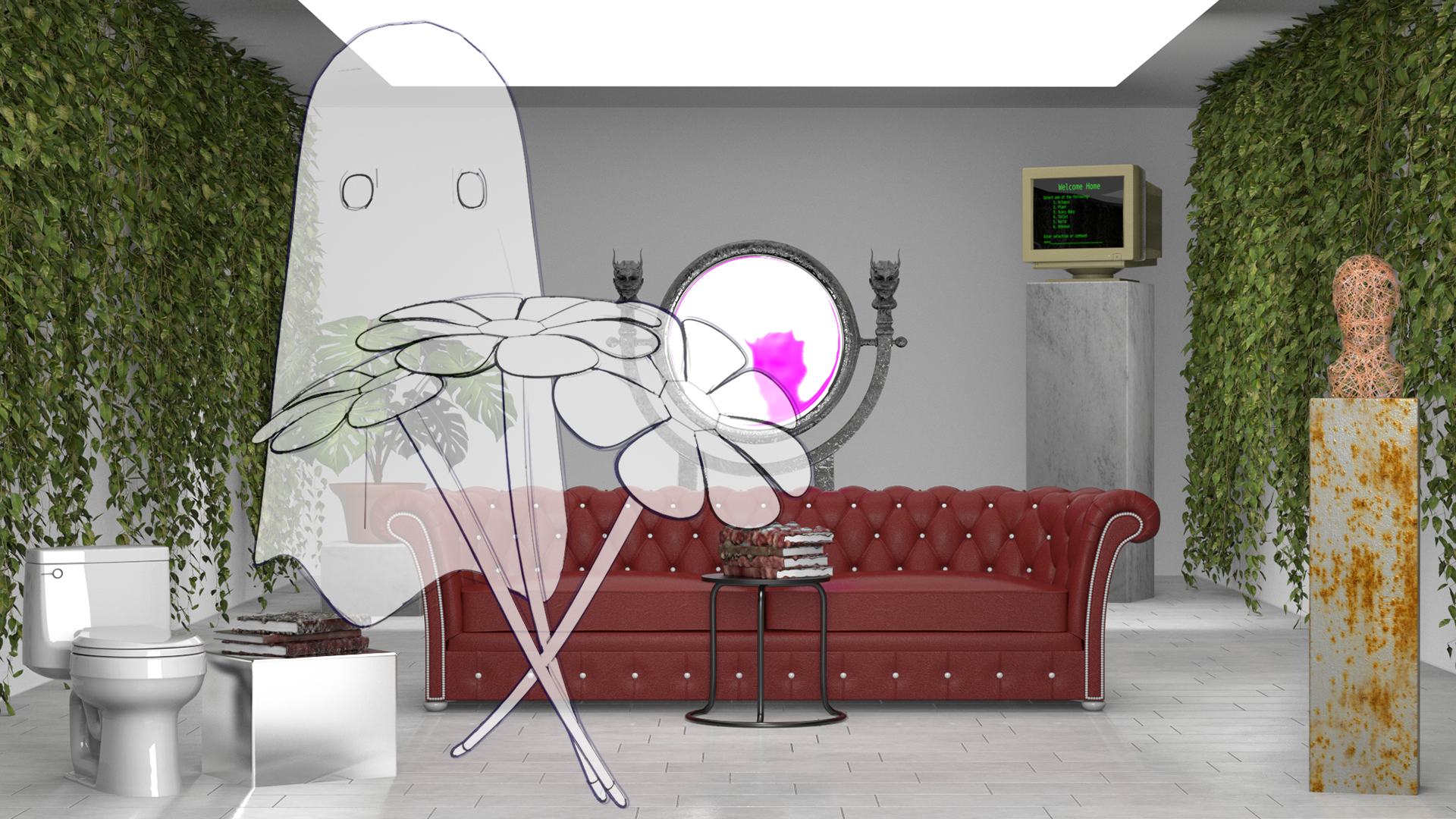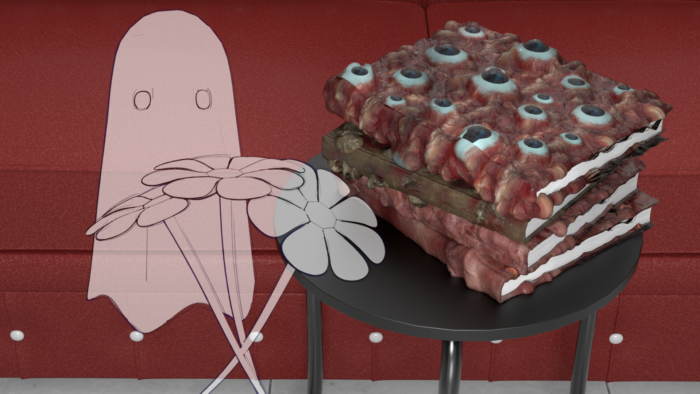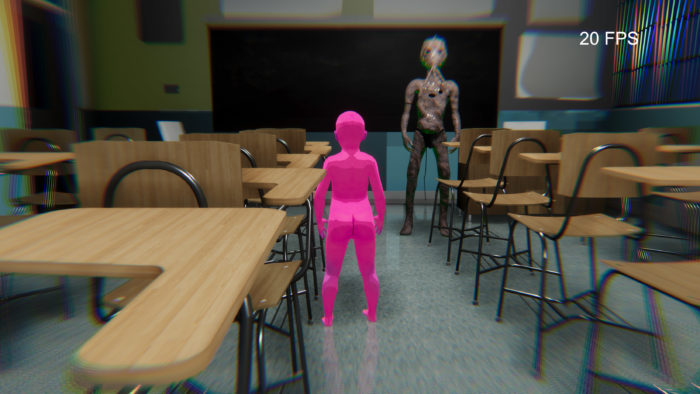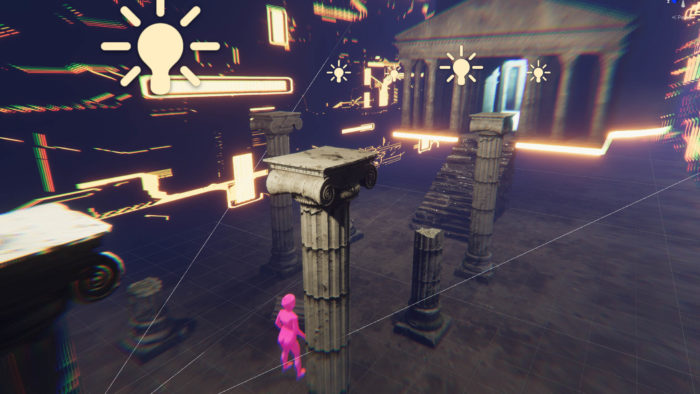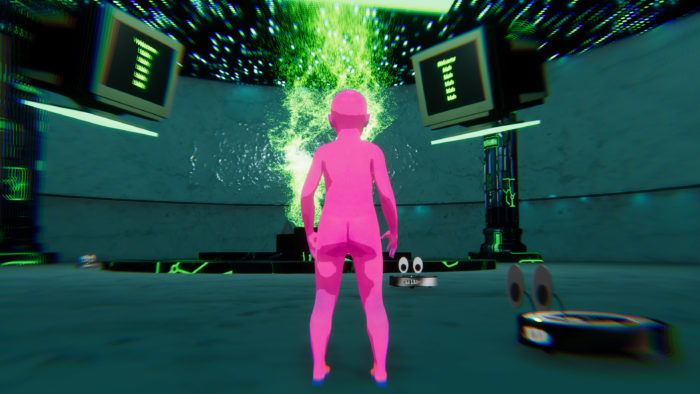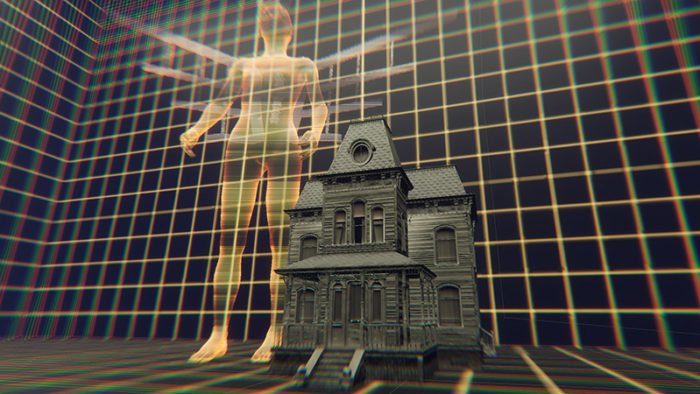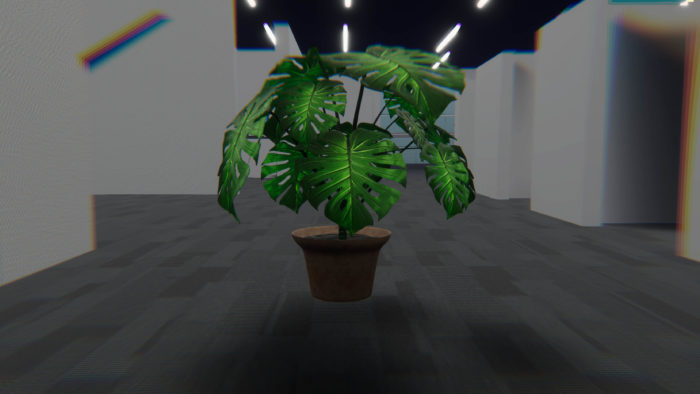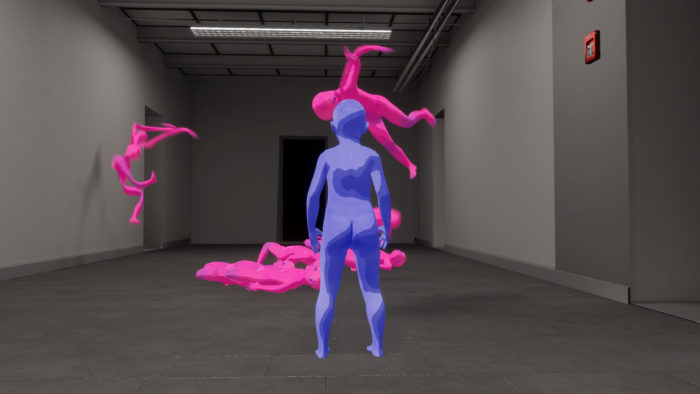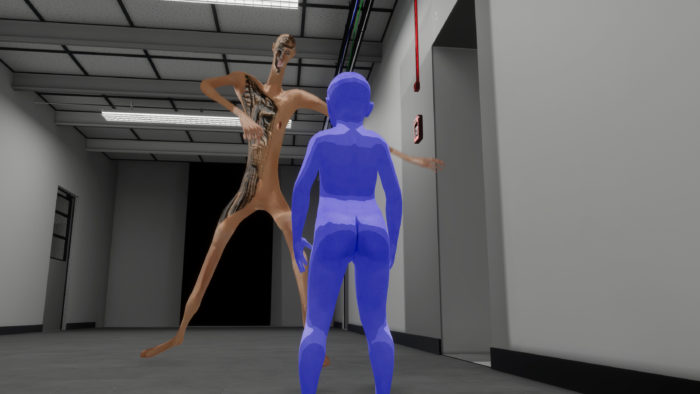Ghosts and Flowers is a video game born from equal parts isolation, loss, and ennui. At the start of the COVID-19 quarantine this past March I was left alone in an apartment, afraid to leave due to chronic illness like many others hiding from a virus that felt like certain death. After a period of intense boredom, frustration, and hopelessness, I took on the task of coding a visual novel. It seemed like an interesting challenge, a good distraction, and I’ve always appreciated this particular genre of video game.
A visual novel is a type of narrative allowing for branched dialogue mixed with interactive elements, and usually simplified game mechanics. At their core, VNs deal with representation and subjectivity. As Aubrey Anable writes in Playing with Feelings, video games are affective systems.1 She argues in the book that video games are both ordinary and a part of culture. To that end, she says video games operate outside of the binary, as they are neither simple ideological training grounds for capitalism nor are they only instruments of social change. The ordinary is what I am attempting to pierce with Ghosts and Flowers. However, I’ve always felt the term “Visual Novel” was a poor descriptor for the format. It brings an expectation and a certain idea along with it—but a VN is not a novel, it’s not a graphic novel, and it is not a play. Perhaps a term such as “Interactive Story” would better fit the reality of engaging with these works. They are entirely their own unique creatures, progressively embraced by communities as a mode to safely connect, roleplay, and embody the perspectives of others.
While coding this game I found myself in dialogue with my plants, the only living things I was in physical contact with for months. I began to care and nurture them in ways I never had, previously. I named them, talked to them, and constantly cared for them. Reliance and caring for those that have difficulty caring for themselves became topics that pressed to the forefront of my thoughts. This was the point of departure from which the dialogue for Ghosts and Flowers was born; an internal monologue with the inanimate objects around me. These thoughts circulated around mobility, reliance, and vulnerability. I was reading (and often rereading) a lot of absurdist theater and disability theory. Purgatories became another point of reference. I kept considering what happens when liminal space becomes static—how we are all stuck in this transition with the expectation of a return of normalcy, but in actuality there is no neutral, there is no normal. Normal is a veneer in which a few have the privilege of living under. Our cultural shifts in relationship to COVID-19 has proven that we can react and mobilize quickly when enough bodies are put into danger, but when the immediate danger has passed for most of those bodies, what happens to those systems put into place, such as remote work and education for those that will continue to need them?
The scope of the game has grown considerably, from the original VN into an integrated third-person exploration game. The choices you make in the VN create not only the 3D world but also the character you embody. This 3D space questions many of the conventions of typical video games, such as an empowered protagonist that becomes more physically able over time. These powerups can manifest in many different forms from super-powers such as flight or greater invulnerability. Life works in the inverse of this. We are all, at best, temporarily able and over time we all will lose abilities rather than gain them. To address this, Ghosts and Flowers situates the player in an unenviable and problematic position where the mundane becomes more difficult. My hope is that this experience engenders a degree of empathy for bodies that may not act like the player’s; a body that may be more fragile and vulnerable than their own. [seq_logo]
1 https://www.upress.umn.edu/book-division/books/playing-with-feelings
Livestreams of game play with the artist:
7PM Thursday November 19, 2020
3PM Tuesday December 1, 2020
6PM Thursday December 10, 2020 with Q&A between Birch and Alexandro Segade
Editor‘s Note: Birch will “perform” a series of livestreams of Ghosts and Flowers on the dates listed above, here on this webpage as well as on his Twitch channel. These livestreams will be performative in nature, as Birch will narrate his reasoning for the game’s construction as well as accounting for his own biographical stakes in its development. Both live and archived Twitch streams will be embedded into the Fulcrum Arts website itself, where viewers are welcomed to log in and join the chat.
The final iteration of the Ghosts and Flowers project will culminate in a live conversation and Q&A with Birch and artist Alexandro Segade. Join us on December 10 at 6pm for the last livestream and discussion.
Alexandro Segade is an interdisciplinary artist whose projects span video, performance, writing, drawing, and comics, using genre to question contemporary and historical constructions of group identities. With these concerns in mind, Segade collaborates in art collectives, makes exhibitions and installations, directs movies and performs live. Segade’s multimedia work, inflected mythic world-building, offers spectacular explorations of a utopian queer collectivity juxtaposed with radical ambivalence. www.alexandrosegade.net
Finally, Birch plans to incorporate his commentary from these livestreams back into the game itself as random dialogue, completing a sort of meta-narrative commentary and continuing its asynchronous and multi-dimensional worldbuilding.
ABOUT THE CONTRIBUTOR
Phillip Birch lives and works in New York. His work utilizes animation, sculpture, and video games. Focusing on technology and history, Birch’s work traces a possible trajectory of human development, and calls into questions the linearity of progress. His work and research explores topics such as disability theory, autoimmune disease, body horror, Catholicism, schizophrenia, and game theory. Birch has had recent exhibitions, performances, and screenings at Reyes|Finn, Detroit, Jack Hanley, NY SculptureCenter, NY, Joan, Los Angeles, 47 Canal, NY, Essex Flowers, NY, The Loft: Servais Family Collection, Brussels, and MUMOK, Vienna. He has given lectures at Yale University and Parsons School of Design. His work is in the collection of the Whitney Museum of American Art.
